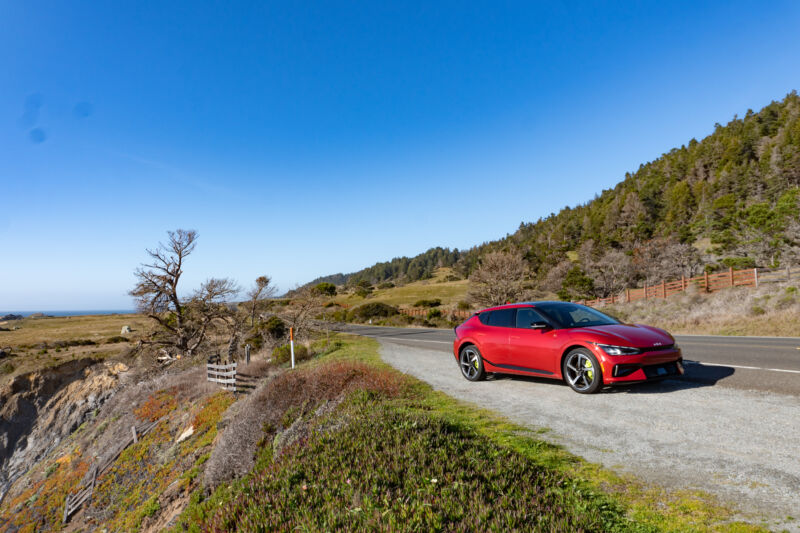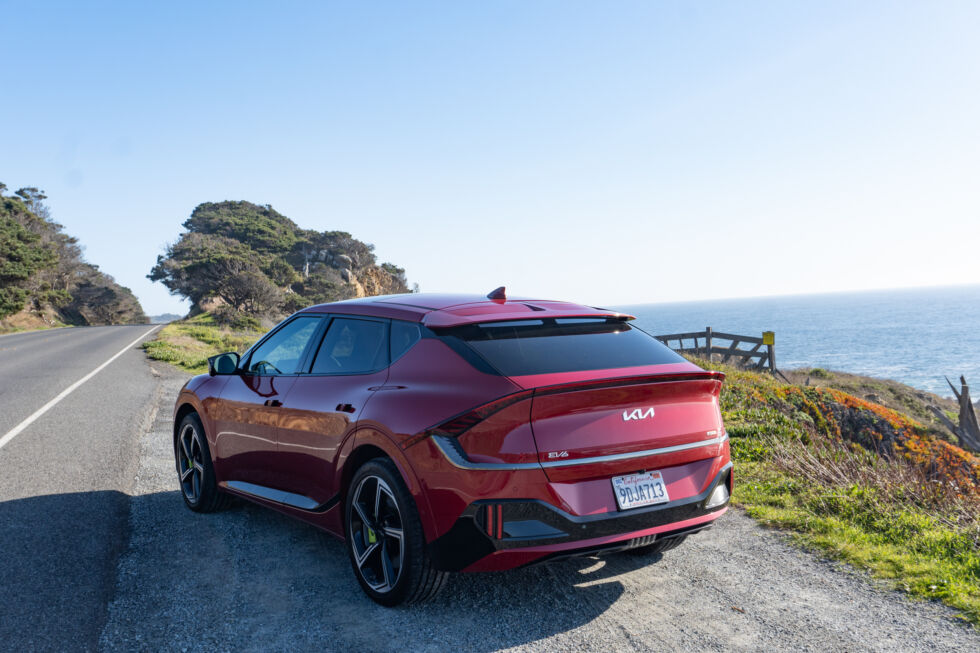
We are emotionally connected to our cars. Even when we buy something that's purely utilitarian, we can't be expected to spend that much time with an object without feeling… something. Even hatred of a car, truck, or SUV shows that we're attached in a tangible way to a vehicle. But when we talk about driving, we generally gravitate toward fun and the joy of the open road.
This brings us to the 2023 Kia EV6 GT. The sportier, quicker EV6 burst onto the scene with a video of the EV besting supercars in the quarter-mile. It kept up with those it couldn't beat, thanks to a zero-to-60 time of 3.4 seconds. It's 576 hp (430 kW) and 545 lb-ft (738 Nm) of torque fast. It's "I bet you didn't think a station wagon that's masquerading as an SUV could blow the doors off a Lambo" fast. Kia is selling one thing with this car: fun.
What is fun worth? Sure, you're dropping more cash on the quickest EV6. Paying more for a performance variant is expected. That's not the real cost of the EV6 GT, though. What you're paying in is range, and that translates to more time on a trip. This might be the faster Kia, but you'll be hitting more charging stations.

With an EPA-rated range of 206 miles (332 km), the EV6 GT has over 100 fewer miles (160 km) of range than the 310-mile (500 km) RWD EV6, while the AWD Wind variant clocks in at 282 miles (454 km) before depleting its battery. The oddly named GT-Line even throws down 253 miles (407 km) before needing a charge. For the sake of our test, I'll pit the "all-the-things" AWD GT-Line against the AWD EV6 GT.
This is where things get confusing. Kia decided to have a GT-Line and GT trim lines. To make things a bit more clear, the GT-Line will henceforth be called the EV6 GTL.
The price of power
All performance variants are more expensive. They're typically purchased by enthusiasts looking for better handling but also extra power. Like the Mercedes AMG and BMW M lines before it, the EV6 GT makes you pay for that ability to bring a childlike smile to your face, terrify passengers, and confound Hellcats.
The GTL starts at $56,700, while the GT starts at $61,600. For that extra $4,900, Kia bestows the obvious: more power, but also better brakes (larger ventilated discs on both front and back), electronically controlled suspension, dual lower arms instead of a single arm on the front suspension, and of course that 0–60 time of 3.4 seconds versus the rest of the AWD lineup's 5.1 seconds.
Compared to the AWD GTL, the EVG GT for about $5,000 more is a pretty good deal. If you're less concerned about extra sunroofs and larger wheels, the AWD Wind variant has the same power as the GTL and starts at $52,600. It still makes sense financially if you look at what others are willing to pay for the performance version of a car.
At issue, though, is charging. A BMW M2 might suck up more gas than the regular 2-Series, but refilling it is a painless process. Yes, you'll stop more often, but gas stations are plentiful, and they deliver petrol at the same rate. But with EV charging stations, that's a different story.


reader comments
141